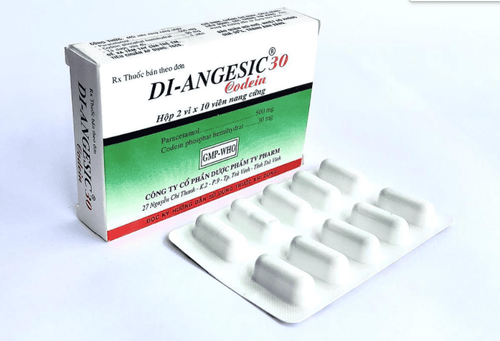This is an automatically translated article.
Neonatal endocardial disease is one of the common causes of acute respiratory failure, often occurring in premature infants. Inner membrane disease is caused by incomplete development of the airways and a deficiency of surfactant, an active substance on the inner surface of the alveolar sacs.
1. What is neonatal endocarditis?
Inner membrane disease is one of the most common causes of acute respiratory failure in neonates, especially in premature infants. It is also the leading cause of death in premature infants.
Endometrial disease in premature babies occurs because the baby's lungs are not fully mature. The lack of surfactant causes the alveolar sacs inside the lungs to collapse, plasma from the capillaries overflows the alveoli and interferes with breathing. Infants with endocardial disease often present with severe acute respiratory distress within minutes to hours of birth, when other causes of infection are excluded, aspiration of meconium amniotic fluid can be ruled out.
Endometrial disease in premature infants is an effective prophylactic antepartum disease if well managed during pregnancy. Women with a history of preterm birth, or other abnormalities that increase the likelihood of preterm labor such as a short cervix or infection, should be monitored closely during pregnancy to promptly treat and prevent respiratory failure. for children.

Bệnh màng trong là một trong những nguyên nhân dẫn đến tử vong hàng đầu ở trẻ sơ sinh
2. Causes of endocardial disease in infants
Surfactant deficiency and immature respiratory system are the direct causes of endocardial disease in premature infants. Surfactant is an active substance located inside the alveoli, responsible for maintaining the surface tension of the alveolar sacs, keeping them from collapsing during respiration. In a healthy fetus, type II alveolar cells begin to secrete surfactant from 20 weeks of gestation and alveolar system development is complete by 32 weeks of gestation.
Premature infants with endothelial disease have to face a decrease in alveolar gas exchange surface area due to atelectasis, lack of oxygen to the body, leading to acidosis, acute and chronic damage to the parenchyma. lung tissue. Injuries to the lungs continue to interfere with the production of surfactant, increasing the edema of the alveolar sacs due to fluid retention and deposition of fibrin fibers.
Neonatal endocardial disease is divided into two main groups: Primary endocardial disease occurring in premature infants and secondary endocardial disease occurring in term and near term infants. Thus, endocardial disease does not only occur in the group of premature babies. The incidence of endocarditis in term infants is approximately 5% and is very rare in pregnancies over 38 weeks. Some of the risk factors that increase the risk of developing endocarditis in the newborn are:
Increased maternal blood glucose levels. Mother has gestational diabetes. High levels of insulin in the mother's blood. Children inhaled meconium Inflammatory conditions in the lung parenchyma C-section

Mẹ bị đái tháo đường thai kỳ làm tăng nguy cơ mắc bệnh cho bé
3. Signs to recognize endocardial disease in infants
Neonatal endothelial disease is characterized by acute respiratory failure occurring soon after birth. Symptoms usually start about 6 hours after birth, in some mild cases, after a few days. Respiratory failure appears suddenly with manifestations such as:
Cyanosis of the skin and mucous membranes, progressively worsening over time. Breathing rate increases rapidly. In extremely premature infants, the respiratory rate may be slow. Rapid pulse Signs of use of accessory muscles of respiration: nasal flaps, sternal contractions Lungs auscultating hypoventilation. The hypoventilation lung area spreads from the focal point to the whole lung. If not detected and treated promptly, children with endocardial disease will fall into a severe state with symptoms of struggling, yawning, low breathing rate, respiratory arrest and death.

Tình trạng suy hô hấp cấp xảy ra khoảng 6 giờ đầu sau khi sinh
4. Methods of diagnosing endothelial disease in neonates
Diagnosis of endocarditis in neonates requires a combination of risk factors for the disease, early symptoms, and additional laboratory tests. Endometrial disease often occurs with a high frequency in premature infants, children with asphyxia due to aspiration of meconium, and mothers with diabetes. The main clinical manifestation is severe respiratory failure, which worsens over time. When endothelial disease is suspected in a child, commonly used laboratory tests to assist in clarifying the diagnosis include:
Chest radiograph : Neonatal endothelial disease with endothelial lesions scattered opacities on both sides of the lungs accompanied by images of bronchial obstruction. In severe cases, the interstitial tissue in the lung becomes edematous with fluid, creating a reticular opacity or opacity of the entire lung when there is atelectasis. Arterial blood gas: Helps identify acute respiratory failure and acidosis. Decompensated acidosis in the blood is a sign of poor prognosis for the child. Biochemical testing of amniotic fluid, bronchial secretions, or gastric juices identifies prematurity in infants. Pathology: Carrying out tissue sampling from the lung for pathology to accurately diagnose the disease is only performed retrospectively on the cadaver. Lung damage is characterized by alveolar collapse, alveolar lumen contains many inflammatory cells and fibrin, and congested interstitial tissue.

Xét nghiệm mẫu bệnh phẩm để đưa ra chẩn đoán bệnh chính xác
5. Methods of treating neonatal endothelial disease
The effectiveness of the treatment of endocarditis in neonates depends on when the disease is detected for treatment. Children with the disease are detected early right after birth, increasing the rate of successful treatment.
Specific treatment for endocardial disease is active surfactant supplementation in high-risk cases. The appointment at the time the child has signs of respiratory failure is considered late. Surfactant used on the market is derived from natural or synthetic, administered through the endotracheal route to the lungs. Using surfactant can cause many side effects such as slow heart rate or stop breathing.
When respiratory failure occurs, the child should be immediately assisted with oxygen through various devices. Mechanical ventilation is indicated when respiratory failure becomes severe unresponsive to oxygen. Acid-base disturbances need to be corrected to maintain blood pH at 7.25.
Other supportive treatments include stabilizing body temperature, supplementing with energy and nutrients, and maintaining electrolyte balance.
Pediatrics department at Vinmec International General Hospital is the address for receiving and examining diseases that infants and young children are susceptible to: viral fever, bacterial fever, otitis media, pneumonia in children, ... With modern equipment, sterile space, minimizing the impact as well as the risk of disease spread. Along with that is the dedication from the doctors with professional experience with pediatric patients, making the examination no longer a concern of the parents.
Customers can directly go to Vinmec Health system nationwide to visit or contact the hotline HERE for support.
MORE
Surfactant pump for neonatal respiratory failure: What to watch out for Respiratory failure due to endocardial disease in premature babies Acute respiratory failure in premature babies: Risks and complications













